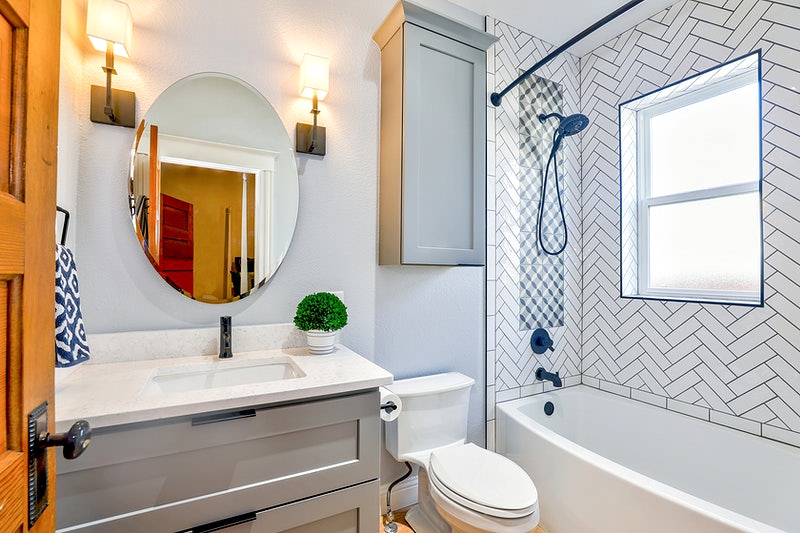Transform your wobbly tile from disaster to perfection with this simple fix that will save you hundreds in repairs
Understanding the Problem
Loose tiles are more than just an aesthetic concern – they represent a potentially serious issue that can escalate if left unaddressed. The primary causes of loose tiles typically stem from poor initial installation, substrate movement, moisture penetration, or aging adhesive. According to recent industry statistics, over 65% of tile failures are attributed to improper installation techniques, while environmental factors account for the remaining cases. The problem often begins when the bond between the tile and substrate weakens, usually due to moisture infiltration or subfloor movement. This weakening can occur gradually over time or suddenly due to impact or stress. Recent studies show that addressing loose tiles within the first signs of movement can prevent up to 90% of major floor tiles repair expenses.
Tools and Materials Needed
- Tile adhesive or epoxy (professional grade recommended)
- Grout saw or oscillating tool
- Utility knife
- Hammer and chisel
- Vacuum cleaner
- Clean cloths
- Level
- Spacers
- Protective gear (safety glasses, gloves)
- Cleaning solution
- Notched trowel
- Fix-A-Floor adhesive (optional but recommended)
Step-by-Step Repair Process
1. Assessing the Damage
Before diving into repairs, it’s crucial to properly evaluate the extent of the damage. Start by gently tapping surrounding tiles with a coin or your knuckle – a hollow sound indicates additional loose tiles. Professional wall tile contractors report that 40% of loose tile cases involve multiple affected tiles, even when only one appears visibly loose. Document the affected area and check for any signs of water damage, as moisture is often the hidden culprit behind tile failures. Pay special attention to grout condition, as deteriorating grout often indicates deeper problems.
2. Preparing the Work Area
- Clear the area completely of furniture and obstacles
- Thoroughly clean the loose tile and surrounding area with a pH-neutral cleaner
- Remove any loose debris or old adhesive from the tile edges
- Ensure the work surface is completely dry before proceeding
- Mark off the repair area to prevent accidental traffic
- Set up proper ventilation if using strong adhesives
3. Removing Old Grout
Careful grout removal is essential for accessing the loose tile without causing additional damage. Using your grout saw or oscillating tool, carefully cut away the grout surrounding the loose tile. Industry experts recommend maintaining a 45-degree angle while cutting to prevent damage to adjacent tiles. Work slowly and methodically, ensuring all grout is removed from the perimeter of the loose tile. If you encounter resistance, stop and reassess to avoid cracking the tile.
4. Applying the Fix
This crucial step requires precision and attention to detail. First, clean both the underside of the tile and the substrate thoroughly. Apply your chosen adhesive in a thin, even layer using the notched trowel. Recent studies show that proper adhesive application can increase bond strength by up to 40%. Press the tile firmly into place, ensuring it’s level with surrounding tiles. Use spacers to maintain consistent grout lines.
Professional Tips and Tricks
- Apply adhesive in a cross-hatch pattern for better coverage
- Use a rubber mallet to gently tap tiles into place
- Check level from multiple angles before adhesive sets
- Consider using rapid-setting adhesive for quicker results
- Clean excess adhesive immediately with a damp cloth
- Allow proper curing time based on manufacturer recommendations
Preventive Measures
Prevention is always better than cure when it comes to tile maintenance. Regular inspections can prevent up to 80% of major tile repairs. Implement a routine maintenance schedule that includes checking grout integrity, cleaning with appropriate products, and addressing any signs of moisture. Seal grout lines annually in high-traffic areas and every two years in lower-traffic zones. Consider professional deep cleaning services every 18-24 months to maintain tile integrity and appearance.
When to Call a Professional
While many tile repairs can be handled DIY-style, certain situations warrant professional intervention. If you notice multiple loose tiles, significant substrate movement, or signs of water damage, it’s time to call an expert. Statistics show that attempting complex repairs without proper expertise can increase repair costs by up to 300%. Professional intervention is particularly important if the loose tiles are part of a shower or other water-prone area, as improper repairs can lead to serious water damage.
Aftercare and Maintenance
- Wait 24-48 hours before walking on repaired tiles
- Avoid heavy furniture or appliances for at least 72 hours
- Clean the repaired area with pH-neutral cleaners only
- Monitor the repair site for any movement or issues
- Maintain proper indoor humidity levels (30-50%)
- Address any grout deterioration promptly
- Schedule regular professional inspections
By following these comprehensive guidelines and maintaining vigilant aftercare, your tile repair should last for years to come. Remember that proper preparation and attention to detail are key factors in achieving a successful, long-lasting repair. Whether you choose to tackle the project yourself or seek professional help, addressing loose tiles promptly will protect your investment and maintain your home’s beauty and value.
FAQ
How do you fix a slipped tile?
Repair: If the tiles are in good shape and only slipped due to loose adhesive, you can reattach them. Apply roofing adhesive to the back of the tile and firmly press it back into place. Secure with nails or screws if necessary. Replace: If the tiles are cracked or broken, it’s best to replace them.
What is the best glue for loose floor tile?
Fix-A-Floor is an extra strength repair adhesive customized for the specific use of re-bonding loose and hollow tile, marble, stone and wood flooring without removing or replacing. It’s fast, easy and affordable. DIY – just drill and fill.
How to fix a wobbly floor tile?
If you have a loose, creaky or hollow floor tile, drill holes in the grout of the tiles and fill with Fix-A-Floor Adhesive attached to a caulking gun and wipe away any excess that spills out. Allow it to cure for at least 24 hours with a weight over the tile.
Why are tiles suddenly popping up?
Tiles can pop up or become loose due to improper installation, uneven subfloor, moisture-related issues, weak adhesive, heavy foot traffic or structural movement. 2). Can I fix a loose tile myself ? It is possible to fix a loose tile yourself by removing the adhesive, reapplying new adhesive and reinstalling the tile.
Sources
[1] https://www.angi.com/articles/how-to-fix-loose-floor-tiles.htm
[2] https://fixafloor.co.uk/blogs/news/how-to-fix-loose-floor-tile
[3] https://www.rubi.com/us/blog/how-to-fix-loose-tile/



